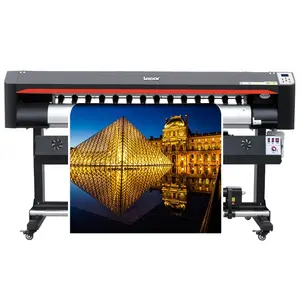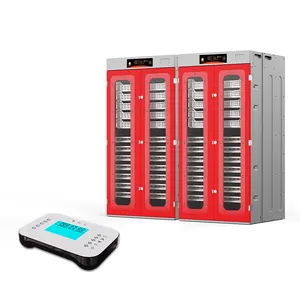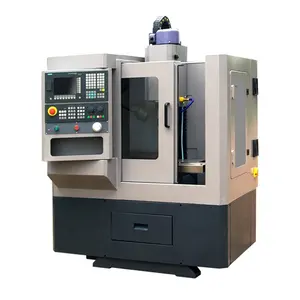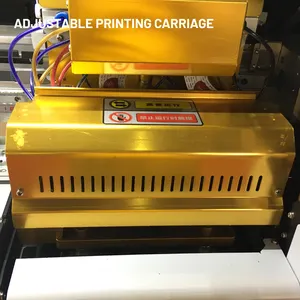Popular in your industry





































































Related Searches:











































































































































Top categories
About fabric plotter
In the dynamic world of textile production, the right tools are pivotal for success. The fabric plotter, a cornerstone in digital textile printing, stands as a critical investment for businesses aiming to enhance their fabric printing capabilities. This ultimate guide will navigate you through the complexities of choosing the ideal fabric plotter, tailored to your business needs. From understanding the chemistry of fabric printing to exploring the vast offerings on our platform, we'll delve into the key features, assess business requirements, compare technologies, and emphasize material compatibility. Whether you're scaling up production or seeking precision in custom prints, this guide is your compass to making an informed decision in the fabric plotter marketplace.
Understanding Fabric Plotters

Understanding the intricacies of fabric plotters, also known as digital textile printers, is essential for achieving optimal print results in the textile industry. The process begins with recognizing the chemistry involved in fabric printing. Different fiber types require specific ink formulations to ensure proper adhesion and color vibrancy. For instance, natural fibers like cotton are best paired with reactive dyes or textile pigments, while polyester favors disperse dyes, and nylon and silk are well-suited for acid dyes.
The choice of ink influences the selection of the fabric plotter. The construction of the fabric, whether woven, knit, or non-woven, dictates the type of printer required. Basic textile printers can handle woven and non-woven fabrics with proper tensioning, but knit fabrics, which are prone to stretching and edge curling, necessitate a printer with a 'sticky belt' system to maintain fabric stability during the printing process.
Each dye and fabric combination follows a specific process to ensure color fixation, which is the permanence of the print on the fabric. For example, nylon involves a multi-step process including printing, steaming for ink fixation, and washing to remove any excess ink. The complexity of these processes varies with the type of fabric, underscoring the importance of understanding the relationship between the fabric, ink, and printer to achieve the desired print quality.
Types of Fabric Plotters Available on Our Platform

Our platform showcases a diverse range of fabric plotters designed to meet various textile cutting requirements. Among the offerings, you'll find versatile cutters suitable for vinyl stickers and machines ideal for corrugated materials, featuring advanced technology and ease of use. The platform also lists advanced options like laser engraving cutting machines, available in multiple power settings and sizes, capable of processing materials from acrylic to plywood and fabric.
For large-scale printing and cutting needs, the site includes wide-format sublimation printers and large laser engravers. These are ideal for businesses that require a machine capable of handling extensive fabric rolls for mass production. Specialized cutters perfect for cutting heavy textiles and multi-layer fabric cutting machines that can efficiently handle bulk orders are also available.
The selection extends to compact and specialized plotters suitable for smaller fabric cutting tasks and those catering to medium-sized projects. For businesses looking for precision and automation, automatic digital cloth cutting machines and tablet CAD garment plotters are featured, which streamline the cutting process for fabrics and cloth. Lastly, a range of flatbed and digital cutting machines are included, which are geared towards pattern making and intricate design work on various textiles.
Key Features to Consider When Selecting a Fabric Plotter

When selecting a fabric plotter, it's essential to consider specific criteria and guidelines to ensure compatibility with your business needs. The maximum size for prints should be 24 inches by 72 inches, which accommodates a range of fabric dimensions. Files for printing must be submitted in PDF format, with a file size under 100MB to ensure efficient processing. It's also important to avoid using 'registration black' in your designs, as this can affect the print quality. A maximum resolution of 300 dpi is recommended for optimal clarity and detail in the final print. Ensuring your image fits within the selected fabric size is crucial; otherwise, you may need to consult with the service provider to explore alternative options. These features are fundamental when choosing a fabric plotter, as they directly impact the usability and quality of the printed materials.
Assessing Your Business Needs
When assessing your business needs for a fabric plotter, consider the reasons behind the need for such a printer. Streamlining workflows may be a priority, where the plotter should integrate seamlessly with existing systems and be accessible to all relevant staff, thereby enhancing efficiency. If your business is expanding, a plotter that can keep up with increasing print demands and offer scalable service is essential. Additionally, owning a plotter can reduce the cost of outsourcing, which might be financially beneficial in the long term. It's also crucial to ensure the plotter meets your print quality requirements for various materials, from posters to large banners.
Prioritize your business's specific requirements, including the plotter's lifespan, which typically ranges from three to six years. Factor in the total cost of ownership, including the initial hardware investment, ongoing expenses for ink or toner, and any maintenance that might be required. The efficiency of the plotter will also impact how quickly you can fulfill orders. Specifications are another consideration; evaluate the print resolution, speed, quality, job size, and color capabilities needed for your projects. Compatibility with different media types and sizes should also be assessed to ensure the plotter can handle the intended print materials.
Comparing Fabric Plotter Technologies
In the landscape of fabric printing, various technologies cater to different business needs. Fabric plotters, or printers, come in several types, each with unique capabilities. Dye sublimation printers are particularly suited for polyester fabrics, commonly used in soft signage and sports apparel. This technology is known for its color vibrancy and durability. Direct-to-fabric printers, on the other hand, are necessary for printing on natural fibers like cotton and silk, as well as synthetic materials. They use a distinct ink chemistry that allows for direct fabric printing. Hybrid printers offer versatility, combining the ability to print on both transfer paper and directly onto fabric. This dual capability allows businesses to switch between fabric types and printing methods with ease. When comparing these technologies, it's important to consider the specific applications and the variety of materials that will be used. Speed is also a critical factor, with some machines offering significantly faster production rates, which can be crucial for high-volume orders. Material compatibility is another key aspect, as it determines the range of fabrics that can be printed on effectively. Each technology has its own set of features that may include ink systems, color options, and the machine's ability to handle different fabric weights and types.
The Role of Material Compatibility in Choosing a Plotter
When selecting a fabric plotter, material compatibility is a crucial factor to consider. Most fabric plotters are designed to handle a wrinkle-free, coated fabric that is prepared to receive ink from various types of inks such as aqueous dye, pigment, eco-solvent, or solvent inks. The resulting printed graphics are not only lightweight and flexible but can also be conveniently rolled up or folded for cost-effective shipping and storage. Additionally, some fabrics come with a repositionable adhesive backing, facilitating easy application on various surfaces without leaving residue, allowing for future reuse. It's important to ensure that the fabric meets the necessary safety standards, such as being flame-retardant, to comply with building codes, especially for trade-show displays. With the continuous introduction of new fabric plotter products, it's advisable to seek out the latest solutions that align with your specific printing requirements.
Advantages of High-Quality Fabric Plotters
Laser cutting technology presents significant advantages for manufacturers handling technical fabrics. It provides precision, flexibility, and efficiency, particularly beneficial for producing items in demanding environments such as protective gear or outdoor equipment. The precision of laser cutting ensures clean cuts and sealed edges, which is crucial for materials that are designed to withstand rugged conditions.
The versatility of laser cutters allows them to handle a wide range of textiles, from tough materials to lighter fabrics such as polyester and fleece. This adaptability makes them suitable for various applications, ensuring that the needs of different manufacturing processes are met. The ability to customize the laser's power to the material's requirements further enhances its utility, allowing for the cutting of both thick and thin materials with appropriate speed and precision.
Safety and ease of use are also inherent benefits of high-quality fabric plotters. Advanced laser systems come with key switch activation for laser lockout and multiple fume extraction options to maintain a safe working environment. Moreover, the longevity of the equipment, backed by industry experience, ensures that the investment in a fabric laser cutting machine is not only about acquiring a tool but also about integrating a solution that will contribute to the facility's productivity over time.
Navigating Alibaba.com for the Best Fabric Plotter Deals
Navigating Alibaba.com reveals a diverse range of fabric plotters, each designed to meet specific printing and cutting needs. From versatile small format flatbed UV printers to large format digital textile dye sublimation printers, the selection caters to various business scales and applications. Industrial-grade CNC digital cloth cutting machines are available for those requiring precision in mass production, while portable vinyl cutters serve smaller, more customized requests.
For businesses focusing on promotional items, options like the UV DTF printer offer the ability to print on a multitude of surfaces, expanding the range of products that can be customized. Similarly, sublimation printers that handle everything from heat transfer paper to large format banners provide flexibility for those in the garment and advertising industries.
The fabric plotters on Alibaba.com come with different head configurations, which are known for their balance of speed and quality. Roll-to-roll textile sublimation printers are also featured, ideal for continuous printing tasks. For specialized tasks, flatbed inkjet cutting machines and contour cut plotters offer precision cutting for patterns and designs on various materials.
When selecting a fabric plotter, it's essential to consider the compatibility with different materials, the speed and quality of printing, and the machine's ability to handle the required production volume. Alibaba.com's extensive collection ensures that businesses can find a fabric plotter that aligns with their operational needs and production goals.
Installation, Maintenance, and Support Considerations
For businesses utilizing advanced plotting equipment, understanding the importance of regular maintenance and expert support is crucial. Specialists with in-depth knowledge of the equipment ensure that any significant issues are addressed promptly and effectively. They offer comprehensive services to keep your machines in optimal condition.
A wide selection of replacement parts and components is available to ensure that your fabric plotting equipment operates smoothly. For technical issues that are challenging to resolve, professional assistance is readily accessible. Specialists can guide you through troubleshooting steps or schedule a service to manage any complications that arise with your equipment.
When considering the installation, maintenance, and support for fabric plotters, it's essential to have reliable contact points. Having direct lines for service scheduling and technical support can significantly reduce downtime. The availability of a dedicated support center aids in maintaining the longevity and efficiency of your fabric plotting machinery.
Conclusion
Selecting the right fabric plotter is a nuanced decision that can significantly impact your business's operational efficiency and product quality. Throughout this guide, we've explored the intricacies of fabric plotters, the diverse range available on Alibaba.com, and the essential features to consider, such as print size, resolution, and material compatibility. We've also highlighted the importance of assessing your business needs, comparing different plotter technologies, and understanding the role of material compatibility. High-quality fabric plotters offer advantages like precision, versatility, and safety, which are indispensable for manufacturers. Moreover, navigating Alibaba.com for the best deals requires a keen eye on material compatibility, printing speed, and production volume. Lastly, the importance of installation, maintenance, and support services cannot be overstated, as they ensure the longevity and efficiency of your investment. Armed with this knowledge, businesses are well-equipped to choose a fabric plotter that not only meets their current demands but also supports their future growth.




















































